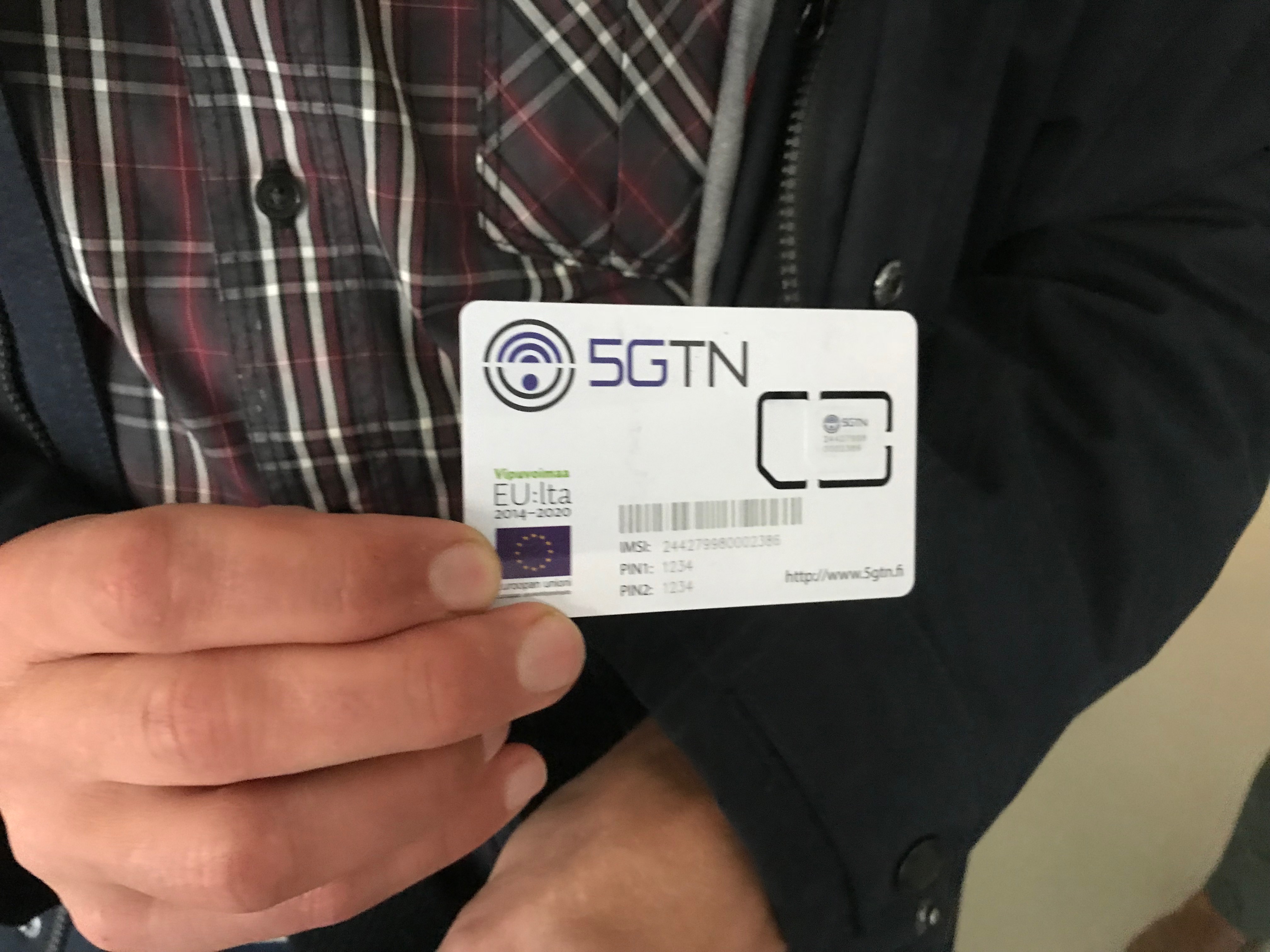Get ready for 6G mobile networks: 1Tbps speeds, microsecond latency and AI optimisation
5G might not even be here yet, but research into the next generation is already well underway.

It might be an unpalatable thought for those who are still unable to get an adequate 4G signal where they live or work, but the first commercial 5G services are set to go live later this year in the US.
Asia, Europe and the UK will follow in 2019 and 2020, kickstarting a new generation of mobile technology, capable of ultrafast speeds, greater capacity and ultra-low latency.
These characteristics will enable enhanced mobile broadband and the possibility of new applications in the fields of Internet of Things (IIoT), Artificial Intelligence (AI) and Virtual Reality (VR), changing the way we work and play.
But on the edge of the Arctic Circle in Northern Finland, one group of researchers are already working on the generation of services beyond that, unconvinced that 5G will be able to live up to the impossibly high expectations that its proponents have generated.
The road to 6G
The city of Oulu is home to a thriving technology scene, with startups and major tech firms looking to tap into the engineering talent left without jobs following Nokia’s dramatic fall from grace in the mobile phone market.
That’s not to say Nokia doesn’t have a presence here. Its telecommunications equipment factory and R&D centre is working on 5G technology and the facility is billed as the ‘home of radio’, due to its role in the development of every significant generation of cellular connectivity. And it’s keen for this to continue with 6G.
The company is one of 60 organisations participating in the University of Oulu’s 5G Test Network (5GTN), which covers the university campus and parts of the city. The 5GTN could eventually be the foundation for the world’s first 6G network, with the 6Genesis project taking the lead.
Sign up to the TechRadar Pro newsletter to get all the top news, opinion, features and guidance your business needs to succeed!
6Genesis is an eight-year programme with €251 million in funding, tasked with researching the wireless communications technologies that will eventually comprise 6G networks.

The Academy of Finland is the single largest sponsor, with the University of Oulu’s Electronics and Communications Engineering department devoting all its resources into the project. Other participants include corporate sponsors such as Nokia, as well as Aalto University and the state-owned research centre VTT.
“The University of Oulu is strong with 5G and with this programme we hope to be strong with 6G,” says Ari Pouttu, the 6Genesis collaborative projects leader. “Our long-term ambition is for the 5GTN to be the world’s first 6G network, so we’re constantly upgrading it.
“The role of the university is to look what will happen over the next ten years. Of course, we’ll do research for a shorter timeframe, but most of our work covers a longer period.”
Delivering the 5G promise
Pouttu says there is a reluctance within industry to call anything ‘6G’ at this stage, but says it is tradition for the even-numbered generations to deliver the promise of the odd-numbered ones. For example, 4G delivered the data revolution hinted at by 3G and 6G will deliver the low latency and architectural shift that 5G is promising.
The easiest commitment for 5G to deliver is faster speeds because it handles spectrum more efficiently. Early 5G networks using 3.4GHz won’t be too dissimilar from LTE but the use of millimetre wave (mmWave) frequencies further up the spectrum will be its true legacy.
These frequencies have traditionally been considered unsuitable for mobile communications, but will be a key component of 5G networks. And 6G intends to build on this legacy by using airwaves even higher in the spectrum.
But the downside to this bandwidth is that signals have a low penetration rate, meaning networks will have to be densified using microinfrastructure such as small cells, which will complement traditional masts. The researchers believe it will take a considerable amount of time and capital to achieve the required density.
“There’s already a theory there will need to be 1000s of radios per person,” adds Pouttu.
Meanwhile, the ultra-low latency promised by 5G can only be achieved through by rearchitecting cellular networks.
With current generation infrastructure, mobile devices use the radio network to connect to the base station before connecting the core network, with the same process used to return the signal. However, this is too long a process for the Industrial Internet of Things (IIoT) and some other latency-sensitive applications.
Mobile operators are using Software Defined Networking (SDN) and Network Function Virtualisation (NFV) technologies to move functions around their network, closer to customers, in conjunction with edge data centres. This reduces latency significantly.
This shift may not happen until the mid-2020s, but Pouttu believes latency will still be too high for industrial applications: “It will be millisecond when microsecond is needed.”

What exactly is 6G?
It’s easy to dismiss 6G as yet another industry buzzword, but there is already an idea of what 6G networks will constitute. Pouttu expects them to be commercialised in the early 2030s, offering even faster speeds, even greater capacity and even lower latency.
Early 6G networks will be largely based on 5G infrastructure, an acknowledgement that each generation ‘borrows’ elements from the previous one, and so will benefit from the increased number of radios and de-centralised network architecture that will take place with 5G.
In terms of speed, 6G networks will allow for 1Tbps by making use of sub-1THZ spectrum and will focus on connecting the “trillions” of objects, rather than the “billions” of mobile devices.
Latency will be improved through the use of Artificial Intelligence (AI) to determine the best way to transmit data from the device to the base station and through the network. It is also predicted that organisations outside the mobile industry will play a much greater role in standardisation, meaning it can be tailored to their needs.
“There has been a lot of talk about bringing verticals into 5G development, but only a few companies in the 3GPP standardisation groups comes from outside ICT,” says Pouttu. “This will change with 6G.”

The rise of the micro-operator
The sub-1THz frequencies earmarked for 6G will be even poorer at penetrating indoors than the mmWave spectrum set to be used in 5G, so it could be that building owners, rather than operators, build out the networks.
“At the university we have come up with something called the micro-operator model,” explains Pouttu. “
“When a property owner starts constructing a building, such as a shopping mall or football stadium, they will decide who is going to build the network. Micro-operators will be tasked with building and maintaining cellular networks as a neutral host and offer access on a wholesale basis.
“Mobile operators themselves will move further up [the chain] to things like content and context, with the maintenance of mobile networks outsourced.”
The first steps
The road to 6G is a long one and 6Genesis’s research activities are only just getting started. After the funding was secured earlier this year, there was a break for the summer, and now there is a real appetite to get going.
Because of the contribution from the Academy of Finland, some elements of the research will be tailored to the needs of the country. The initial focus will be on Industry 4.0, personalised health services, sustainable energy and autonomous transportation.
There may be an early definition of 5G – 1Tbps speeds, microsecond latency, infinite capacity, and the use of AI to build networks and route traffic – but it will be more than a decade before it is a reality.
Industrial applications will likely be the biggest single beneficiary, but do consumers really need such advanced connectivity? Pouttu says he isn’t worried, stating that no one could have predicted the rise of YouTube and other video services which made 4G so necessary.
“We are just engineers, people will think of the applications.”
- Here are the best mobile phone deals for September 2018
Steve McCaskill is TechRadar Pro's resident mobile industry expert, covering all aspects of the UK and global news, from operators to service providers and everything in between. He is a former editor of Silicon UK and journalist with over a decade's experience in the technology industry, writing about technology, in particular, telecoms, mobile and sports tech, sports, video games and media.